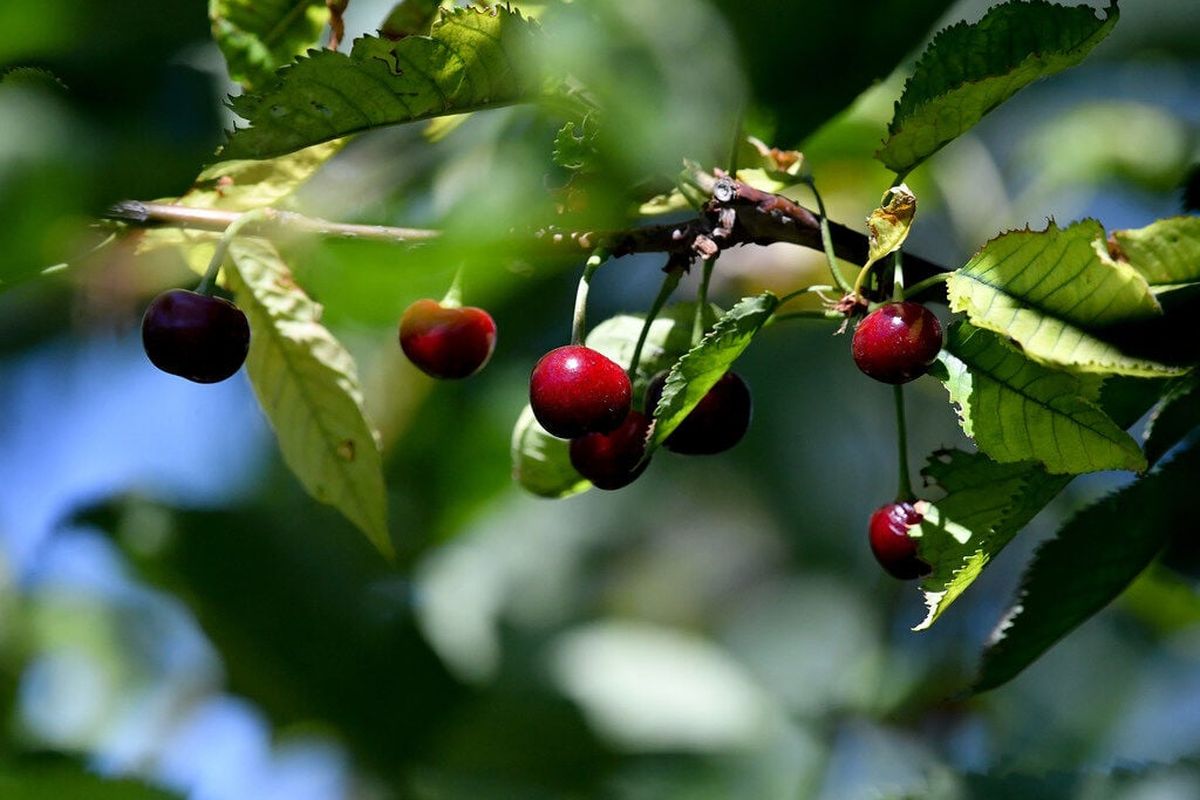Northwest cherry growers hopeful 2024 harvest will steady ship after several tumultuous years

This year’s cherry harvest forecast has many Northwest growers hopeful for a return to normal, after extreme weather and poor market conditions have led to lackluster crops every year since the COVID-19 pandemic.
The forecast released last week by Yakima-based nonprofit Northwest Cherries predicts a haul of 17 to 18 million 20-pound boxes of cherries from Washington and other nearby states this year.
The marketing organization monitors the industry and promotes cherries grown in Utah, Idaho, Montana, Oregon and Washington, the latter of which grows roughly 85% of the forecast 360,000,000 pounds of cherries, Northwest Cherries President B.J. Thurlby said.
Harvesting will get underway the first week of June, which is a few weeks ahead of schedule, Thurlby said. That means Northwest Growers may see some overlap on store shelves with California’s cherries, but not to the extent they did last year when the market crashed and a federal disaster declaration was issued.
Filling stores with the delicious red, orange and yellow fruit that come into season each summer is a well-orchestrated dance. Cherry trees of different varieties are planted in different regions and at different altitudes to keep shelves stocked throughout the summer. California’s harvest tends to come in first, and is mostly out of stores by the time the Northwest starts its harvest.
Last year, a record cold and wet spring put California’s cherry harvest behind by several weeks, Thurlby said. California also recorded a near-record yield, meaning there were a lot of California cherries still on the market when Northwest growers hit their typical harvest peak in early July.
“Cherries don’t store the way apples and pears do, to be then sold weeks and months later,” said Jon DeVaney, president of the Washington State Tree Fruit Association. “So when we had the cherry season compressed significantly, it led to some very bad pricing for growers.”
“In some cases, the prices were low enough that it didn’t even make sense for them to harvest their orchards,” DeVaney added.
Last year was a series of compounding challenges for Northwest growers, after they had to contend with three consecutive tough seasons in the years before. International export restrictions due to the pandemic, crop disease and extreme weather that yo-yoed between record heat in 2021 and late snow in 2022 marred the three previous cherry seasons.
High temperatures also led to reduced yields in the Pacific Northwest in 2023, with some cherries not reaching maturity, and others melting off the trees just as they did during the record heat waves of 2021.
Growers, and organizations like Thurbly’s and DeVaney’s, began calling for state and federal aid well before the summer ended. They had those requests answered in March, when the U.S. Department of Agriculture made emergency loans of up to $500,000 available to growers in 22 Washington counties and six counties in Oregon.
“We’re praying we don’t have to go through that again this year,” Thurlby said.
Thurlby said Northwest growers are doing what they can to slow their harvest to let the market clear out as much as possible, which should be aided by Memorial Day weekend sales – a major selling holiday for California cherries. Last year’s crop from the Golden State missed the holiday entirely, but farm workers have already begun harvesting this year, and experts expect it to be another bumper crop for California.
“They’ve had two big crops in a row,” Thurlby said. “I could go back 30 years, and I think they’ve done that one other time.”
Thurlby said he’s anxious to see how much of an overlap there will be between the harvests this year.
To the Northwest’s advantage, this year’s crop appears to be growing to larger sizes than California’s, which is what both domestic and foreign markets like Canada and Southeast Asia tend to prefer. Up to 35% of the region’s cherries ends up overseas annually, when growers have enough to export and prices are right.
It will be a shorter and earlier season than normal, so consumers looking to get their hands on some prized Northwest Bings, Rainiers or Chelans will need to do so in June and July. A January freeze damaged trees at higher elevations and in northern Washington, significantly reducing the number of cherries slated to hit the market in August.
“Growers are really hopeful that with good-quality fruit, and a more normal harvest period, that they’ll have more favorable conditions for selling the crop,” DeVaney said. “We’ll actually be able to earn some money on their fruit this year.”
Shawn Gay, manager of the grower partnership Finley Cherries, oversees 500 acres of orchards in Benton County where he grows apples, cherries and grapes. He said his 2023 crop came in earlier than others, so he was able to pick most of his orchard before the market crashed.
“We still had a tough season,” Gay said. “Even the pickable stuff, the return did not bring back or break even with the prices like that.”
Gay said some of his neighbors, and other growers in the state, didn’t get off as easily. The largest cherries were prioritized for picking the later in the season it got.
“I did not pick 100 percent,” Gay said. “As the season progressed, there were more and more people who did not. The bar kept moving in terms of sizing. It didn’t make sense to be picking.”
Gay said he’s never experienced anything like last year’s market collapse in his over 25 years in the industry, but that each year brings new challenges for cherry growers.
He’s hopeful this year will be somewhat of a return to normal, and said the cooler temperatures in Washington this week could delay the harvest a little and help increase the separation between the California and Northwest crops.
“The market, the crop load, the money; hopefully it all lines up to a better year to help all of us,” Gay said.